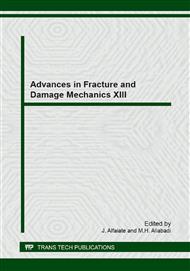p.185
p.189
p.193
p.197
p.201
p.205
p.209
p.213
p.217
High-Cycle Fatigue Damage of Oxygen-Free and Deoxidized-Phosphorous Copper Processed by Equal Channel Angular Pressing
Abstract:
Two Cu samples: oxygen-free copper (99.99 wt% Cu) and deoxidized low-phosphorous copper (99.9 wt% Cu) were processed by equal channel angular pressing (ECAP). After the ECAP processing using 4 passes, equiaxed grains (~300 nm grain size) and elongated grains were formed for both samples. Fatigue strength of ultrafine grained Cu was enhanced by the addition of trace impurities. The formation behavior of surface damage and the change in surface hardness during stressing were monitored. A close relationship was observed between the change in hardness and the formation behavior of damage. The effect of trace impurities on the fatigue damage was discussed from the viewpoints of the grain coarsening and the crack initiation/growth behaviors.
Info:
Periodical:
Pages:
201-204
Citation:
Online since:
September 2014
Authors:
Keywords:
Price:
Сopyright:
© 2015 Trans Tech Publications Ltd. All Rights Reserved
Share:
Citation:


